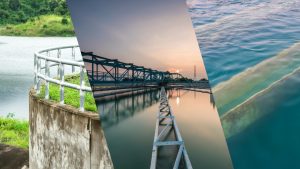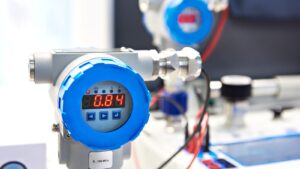Although the construction of roads has made transportation much easier, it must not be forgotten that human safety was also at the forefront. In other words, without an infrastructure that could help a person safely transport themselves, their goods and other materials, society would have to risk their lives, spending time on the road under the warm sun for days. Today, however, with the looming threat of climate change, which has imposed a threat to the livelihoods of the humankind. The number of carbon emissions being released into the air has resulted in the rise of temperatures and an increase in ocean levels.
Consequently, in different countries, governments have implemented policies to tackle the amount of carbon dioxide released into the atmosphere. According to Richard Delplace, Austroads Program Manager Network, the roading industry is responsible for 14 per cent of Australian GHG emissions. While an obvious way for the transportation industry to tackle this issue is through the transition to electronic vehicles, many forget that in addition to the automobile sector, roading asset managers play a critical role in the government’s fight to achieve zero net emissions. Whether in terms of building robust assets with longer lifecycles or reducing energy and wastage by preventing assets from breakage, the infusion of innovative technology is one guaranteed way of ensuring decarbonisation. This article will provide an overview of the technologies that the roading sector should utilise for decarbonisation.
How The Construction of Roading Assets Lead to Carbon Emissions
In considering how roading asset managers can remarkably reduce carbon emissions, it is beneficial to consider what factors of constructing or maintaining road assets are carbon intensive. However, it should be noted from the outset that this process is not direct; thus, a combination of intricate procedures can produce carbon emissions.
- The Material Used for Construction: One significant contributor to carbon emissions is using concrete, steel, asphalt and other raw materials. The carbon emitted through such materials is generally referred to as “embodied carbon”, a concept most familiar in the construction industry.
- Maintenance and Servicing Work: Every time energy is put into maintaining or repairing damages in roading assets, carbon emissions are released. The amount of energy explicitly released when repairs are carried out on assets already damaged is supposedly much higher.
- Roadside and Tunnel Lighting and Signage: It should not be forgotten that roading assets are not limited to the main road on which vehicles drive on. It also includes pavements, bikeways and other assets. The condition inside tunnelways is also a significant factor for the increased carbon footprint in the roading industry.
Traffic Congestion: Where public safety is concerned, any damage to a road surface results in the roads being closed for repair. The more roads that are closed, the higher the chances of traffic. This is because vehicles have no alternative route, so the number of journeys undertaken in one lane would be too much. As a result, if many cars run on one street and are stuck in traffic, more carbon is released into the atmosphere.
Four Technologies to Help Decarbonise the Roading Industry
Decarbonisation and achieving net zero emission refer to the same goal: striking a balance between the emissions produced and the emissions removed from the atmosphere. Here are five technologies asset managers should infuse into their roading operations to reduce the carbon footprint in the sector.
Digital Twins
As constructing roading networks and assets has been a central factor that has led to the release of carbon emissions, digital twins are a must-have technology for road asset managers. This allows engineers and designers to design, test and build a feasible roading asset with a long life cycle. In essence, a digital twin eliminates the need to actually build any asset on the presumption that it will function appropriately. Instead, by slotting different materials into the virtual replica, asset managers can accurately determine the sustainability of using such raw materials and their effect on durability and reliability and afterwards, construct the asset in question. Thus, through digital twins, asset managers can be in control of the emissions released during the construction process.
Digital Twins
As constructing roading networks and assets has been a central factor that has led to the release of carbon emissions, digital twins are a must-have technology for road asset managers. This allows engineers and designers to design, test and build a feasible roading asset with a long life cycle. In essence, a digital twin eliminates the need to actually build any asset on the presumption that it will function appropriately. Instead, by slotting different materials into the virtual replica, asset managers can accurately determine the sustainability of using such raw materials and their effect on durability and reliability and afterwards, construct the asset in question. Thus, through digital twins, asset managers can be in control of the emissions released during the construction process.
GIS Technology
GIS technology provides a birds-eye view for asset managers to gain faster analytical capabilities by slotting all asset data on a map. As this is a technology that is best performed when integrated with other advanced technologies, it becomes the point of reference for asset managers since it provides all asset-centric information relating to an entire city in one place. This is a great way to keep track of the conditions in an integrated highway network, whereby one asset failure could lead to the public to face discomfort in that part of the road network. As the complete health profile of each asset can be viewed on this map, maintenance crews can schedule their work based on the criticality of each asset. Where there is an issue with an asset, GIS also provides the leeway for the roading manager to inform and reroute vehicles immediately to prevent congestion.
Industrial Internet of Things (IIoT) Sensors
A fleet of IIoT sensors can help asset managers monitor the asset’s condition in real-time. This improves the overall maintenance of roading networks based on data-driven information. As sensors are comparatively less expensive and lightweight, this is a cost-effective method to gain insights on each asset on a city-wide basis. Based on the data provided, asset managers can graph risk occurrence trends and ensure that they meet OEE standards. It gives a massive advantage in fulfilling ISO 55000 requirements and hence, is a crucial component that should be implemented into your asset solutions. All this is made clear via the consolidated dashboard that allows asset managers to utilise resources efficiently. Automating data collection also removes the need for a team to carry out manual inspections, thus helping managers to reduce the overall cost incurred in their operations.
Predictive and Prescriptive Analytics
Even if an asset is made using the most sustainable raw materials that guarantee a long life cycle, one must ensure that anomalies do not occur. In other words, every time an asset requires repair, it depreciates health of the asset. This is where predictive and prescriptive Analytics comes in. With the number of data collected by sensors, CCTV and laser footage, predictive and prescriptive analytics can predict impending risks. By doing so, this technology can warn about it the asset manager in advance, thereby acting immediately to ensure the issue does not form. Thus, Artificial Intelligence (AI), Machine Learning (ML) and other smart technologies infused into the solution help this technology to be more accurate in its predictions. The data-driven reports that are thus generated are reliable and help asset managers to make reliable decisions.
CCTV and Laser
Asset managers can now implement robot fleets that have CCTV and laser technological capabilities. Roading managers can monitor any structural impairments by being the eyes on the ground. This includes potholes of varying sizes and different forms of road cracks such as longitudinal, wheel track, alligator, transverse and more. All videos or images captured are saved in a cloud platform which, when infused into a well-integrated AI-software solution, carries out visual analytics. Not only does this, therefore, automate the process of manual checkups, but it allows managers to act on it as an issue on the road surface appears immediately. With CCTV and laser technology, this traditional time-consuming role can now be completed within seconds.
Transitioning To A Greener Roading Industry
With the rise of urbanisation, a natural consequence has been the implementation of roading infrastructure. While this has helped society to get from one place to another much faster, without ensuring that the roading industry reduces its carbon emissions, the roading sector will keep contributing to climate change. Thus, to help the government of Australia to meet its net emission targets, incorporating digital technology has become a pivotal need. It is, therefore, time for road asset managers to make an eco-friendly transition by integrating a solution suite powered by industry 4.0 technology.







